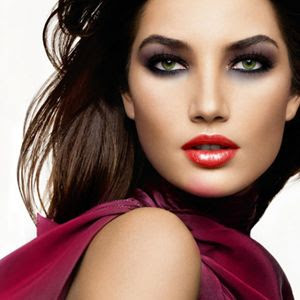Makeup Ideas Biogarphy
Source(google.com.pk)But in October of 2007, the question of cosmetic safety surfaced yet again when the advocacy group Campaign for Safe Cosmetics announced that a third of the 33 red lipsticks it had examined by an independent lab contained what the group considered a “hazardous level” of lead. The cosmetic industry has responded, for the most part, that lead — if present at all — is only in trace amounts; the FDA, which has not set a limit for lead in lipstick, is looking into the CSC’s findings.
In the meantime, U.S. marshals seized more than 12,000 tubes of Age Intervention Eyelash , a product designed to promote eyelash growth, after the FDA determined it was an “adulterated cosmetic” and potentially dangerous. (The product contained bimatroprost, a prescription drug used to to treat elevated pressure inside the eye). And the state of Minnesota took it upon itself to officially ban the use of mercury in mascara, eye liners and skin-lightening creams. (Most makeup companies have phased out use of mercury, but it's still used in some products as a preservative.)
So are we better off now — or is this déjà “bloom of youth” all over again?
“It’s hard to know,” says Teresa Riordan, author of “Inventing Beauty: A History of the Innovations That Have Made Us Beautiful.” “The U.S. Food and Drug Administration does oversee cosmetics, but it’s an after-the-fact kind of oversight, where unsafe products can be taken off the market once they have been proved to be unsafe. Unlike drugs, cosmetics don’t have to go through clinical trials before they go on the market.”
AdvertiseOverall, though, “the general public is definitely much more aware about potential dangers than it was a century ago.”
True, says Stacy Malkan, author of “Not Just a Pretty Face: The Ugly Side of the Beauty Industry,” but there’s plenty more to be aware of when it comes to harmful ingredients seeping into our skin via cosmetics and personal care products. According to her book, the Centers for Disease Control recently reported that American women had a higher “body burden” of phthalates, a set of industrial chemicals linked to birth defects and infertility.
“Back in the day, there were high acute exposures of lead in cosmetics because they didn’t know better,” says Malkan, cofounder of Campaign for Safe Cosmetics. “But we know better now and unfortunately, there’s still lead in lipstick and mercury in some mascaras. We’re also being exposed to chemicals like phthalates many times a day through personal care products like shampoos, face creams, fragrances, aftershaves, deodorants.”
The repeated cumulative exposures to multiple toxic chemicals is a “different way to look at it than back in the day,” Malkan says, but it’s “what we’re most worried about now.”
As for what consumers are worried about — or what they’re willing to risk in order to ensure flawless skin, luscious lips, and a long, longer, longest! lashes — that’s currently being sussed out by consumer advocates, lawmakers and Big Makeup.
Does she or doesn’t she have lead in her lipstick? Only time will tell.
Diane Mapes is a Seattle freelance writer and author of the recently released "How
Unfortunately, many of these cosmetics were potentially dangerous and/or deadly as they contained ingredients such as mercury and lead. However, the lead in their eyeliner may have been used as a tool for ridding themselves of eye infections like conjunctivitis, as evidenced by a study published in Analytical Chemistry. The heavy eye makeup also helped to keep insects at bay as well as help with the glaring sun overhead.
Makeup Ideas
.jpg)
Makeup Ideas

Makeup Ideas

Makeup Ideas

Makeup Ideas

Makeup Ideas

Makeup Ideas

Makeup Ideas

Makeup Ideas

Makeup Ideas

Makeup Ideas
No comments:
Post a Comment